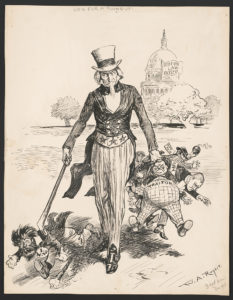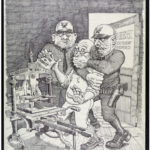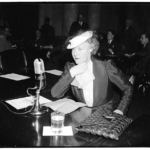Espionage, Sedition, Censorship, and Speaking Up

Overview
Students analyze a political cartoon created by William Allen Rogers during World War I to give context to press censorship during that war. Next, students explore additional sources from the Library of Congress to analyze how censorship worked both before and after the passage of the Espionage and Sedition Acts of 1917-18. Finally, students compose their own “email to the editor” of a local newspaper or online news source, expressing their own views about the importance of freedom of the press and their informed opinion of press censorship in wartime.
Related Resources
-
The Historical Interpretation of Unabridged Freedom of Speech
book chapter -
Freedom of the Press Foundation
website -
Women Come to the Front: Journalists, Photographers and Broadcasters of World War II
online exhibition -
Collection Spotlight: Women Photojournalists
-
Collection Spotlight: National Press Club Luncheon Speeches 1954-1989
Grade
High School
Subjects
Civics, Social Studies
Length
80-100 minutes
Topics
Committee on Public Information, Espionage Act 1917, Sedition Act 1918, WWI, World War I, censorship, espionage, free press, freedom of the press, newspapers, sedition, suppression


